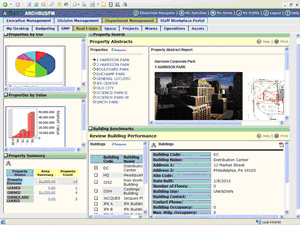|

ARCHIBUS V.16 incorporates a long list of added
features that improve the functionality and usability of the software,
including:
Activity-based Deployment. With activity-based deployment, users can
more easily gain clear definition and consensus on the highest value
automation priorities in the organization, and quickly detail
responsibilities, identify resources, and set specific timeframes for
achieving their goals. Even a broad range of automation goals can be
achieved activity-by-activity, step-by-step, with each new function
building on the data, skills, and success of the previous deployment.
New �Learning Path? ARCHIBUS V.16 includes a role-based Learning Path
that is integrated directly into the Help system so users can quickly
identify the information that is most relevant to a particular job. This
results in a flatter learning curve for new users, greater productivity,
and reduced staff training needs. The impact of staff turnover is
minimized and organizations can accelerate their Return On Investment.
New �Getting Results?Section. The �Getting Results?section presents
ARCHIBUS from the standpoint of the business results to be achieved,
providing lists of prerequisites, goals, and organizational titles with
a stake in the results. Users are able to quickly move from goals to
action plans and the tools needed to achieve those results.
Integrated, Web-accessible Documentation. All ARCHIBUS documentation is
now online, organized in a single table of contents, and searchable from
a single dialog, speeding the process of answering questions and
accomplishing tasks.
Microsoft SQL Server Express Support. ARCHIBUS V.16 includes support for
SQL Server Express, a no-fee database server software that is included
with the product and reduces the cost and effort required to get small
workgroups up and running on ARCHIBUS.
CAFM Interoperability. New features for interacting with data and
drawings increase productivity for CAD specialists by enabling them to
more fully leverage the power of both the ARCHIBUS and AutoCAD
environments, in tandem.
|


















